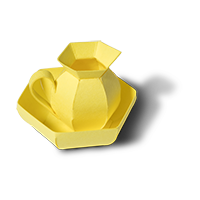
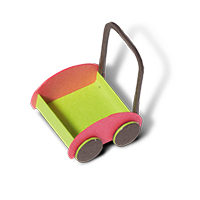

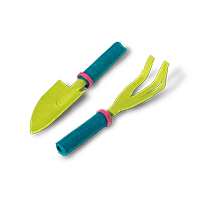
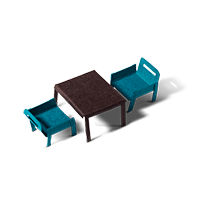





Montessori is a teaching method that stimulates autonomy, practical learning and senses of community. Widespread in the world, it was developed by the Italian physician and educator Dr. Maria Montessori in the early 20th century and applied for more than a century in children of all origins and cultures everywhere. After years of scientific research, Dr. Montessori concluded that children with freedom of choice show greater interest in learning, are more motivated, have more discipline and autonomy, evolving faster than children under traditional teaching methods. There are tens of thousands of Montessori schools in the world. In the United States alone there are more than 8,000.
Main pillars of the Montessori Method:
Seriously implemented, Inciting the desire to learn.
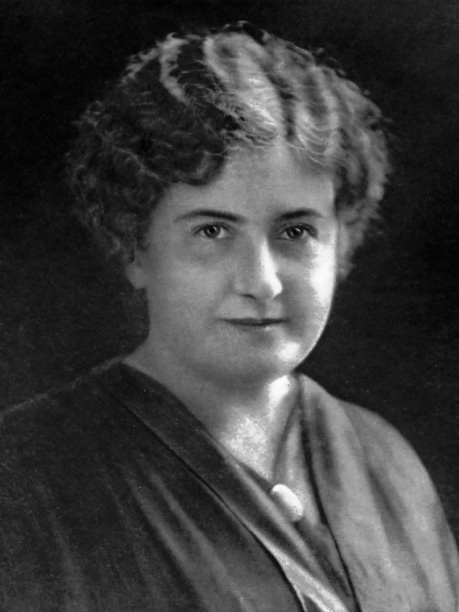

“Free the child’s potential, and you will transform him into the world”
– Maria Montessori


“Free the child’s potential, and you will transform him into the world”
– Maria Montessori
Main pillars of the Montessori Method:
Seriously implemented, Inciting the desire to learn.

Our educators are trained or being trained in the Montessori method. They are prepared to guide the activities respecting the pace and freedom of choice of each child. As prepared adults, the educators know when and how to intervene so as not to generate ruptures in concentration. The primary role of the educator is to observe each student in order to strengthen interests and present new challenges. The educator shows children a world full of discoveries, allowing them to explore spontaneously.
Each of our spaces is designed for the child. The arrangement and the height of the furniture make it possible for the materials to be always within reach of the students, allowing autonomy of exploration. We use neutral colors, providing a sense of tranquility for the child to focus on the activity he or she is working on. In mixed-age rooms, older children share their knowledge with younger ones, learn to teach and lead group work. They become models and like to play that role. The younger ones reflect their behavior and strive to accompany their peers, anticipating activities and challenges that await them in the near future. The bond developed between children of different ages teaches the two groups a lot, in a dynamic of cooperation and mutual respect promoting socio-emotional growth.
Our materials allow the development of the scientist that exists in each child: experimentation, hypothesis testing, confirmation, repetition. All materials are designed to develop some specific skill, whether linguistic, mathematical, sensorial, motor or cognitive. The child is free to work with the materials they are most interested in, as long as the rules of the environment are respected. It is up to the educator to guide the students and present each activity in order to arouse interest in the various areas of knowledge.
“Maria Montessori was a scientist before being an educator, and her main interest was to understand children, not to shape them.” (Gabriel Salomão)
It is important for the child to have a calm environment that favors concentration, sense of order, options of work and exploration. The child likes to act by choices, is naturally cheerful and has an extremely absorbing mind.

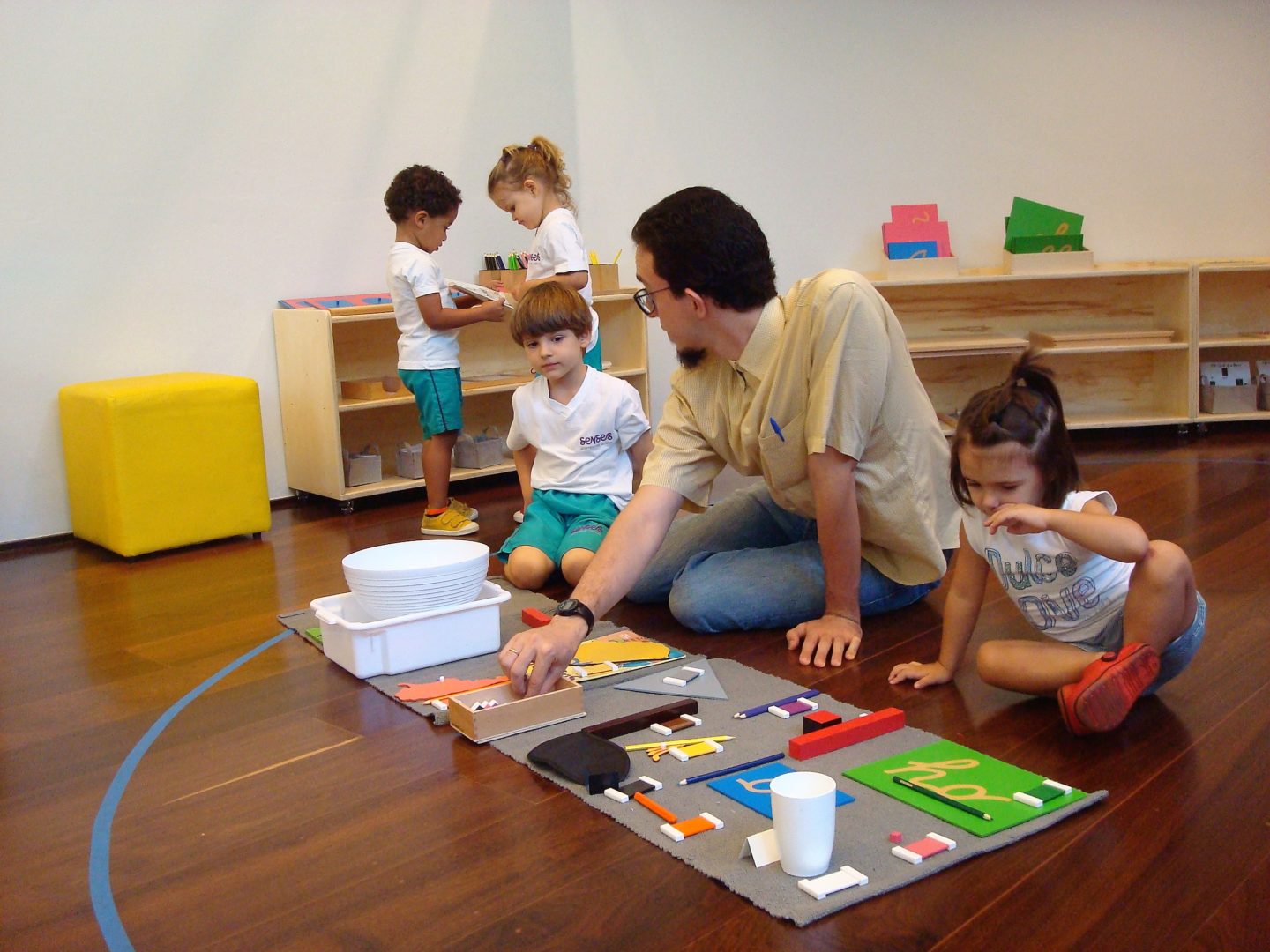
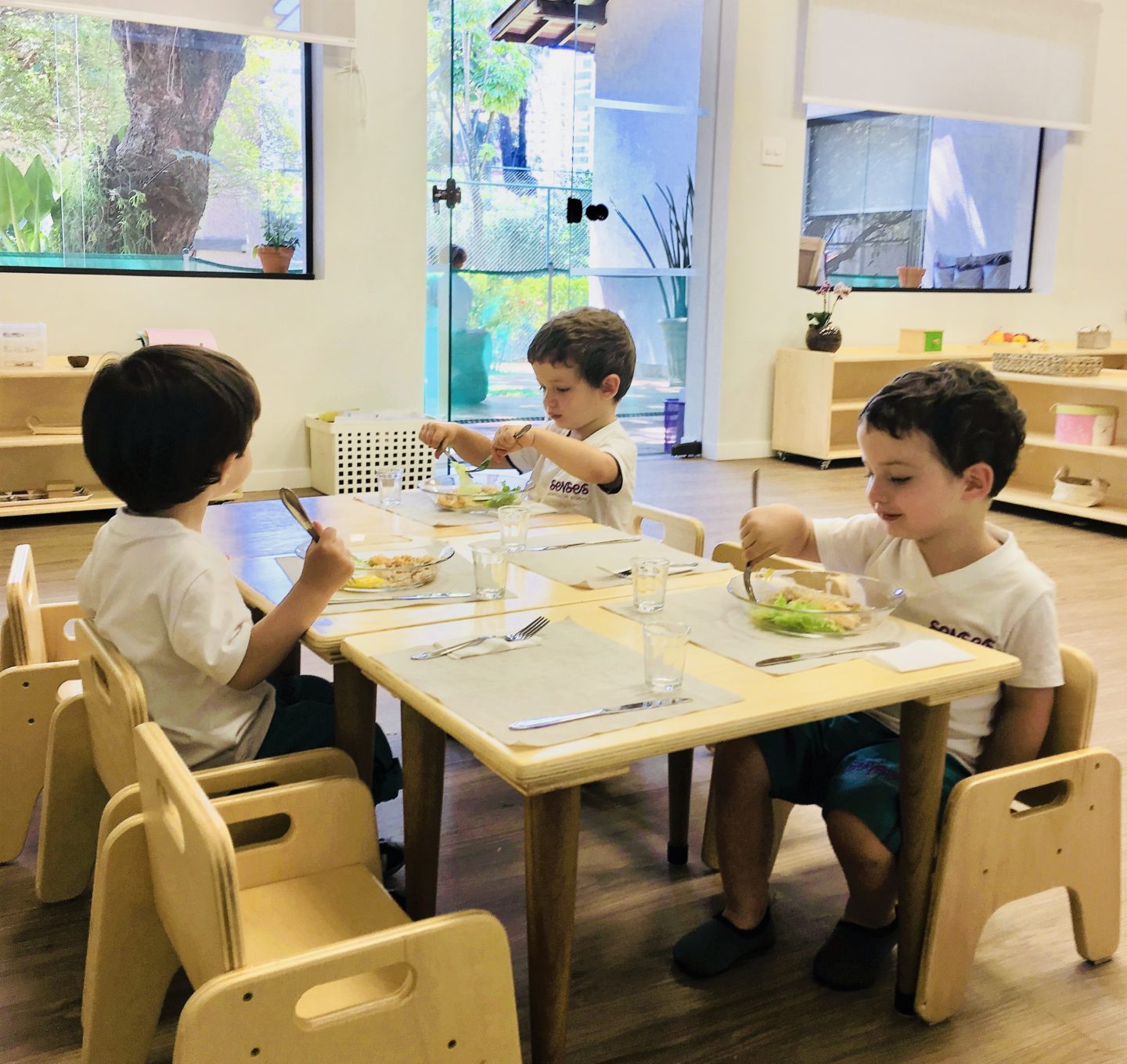
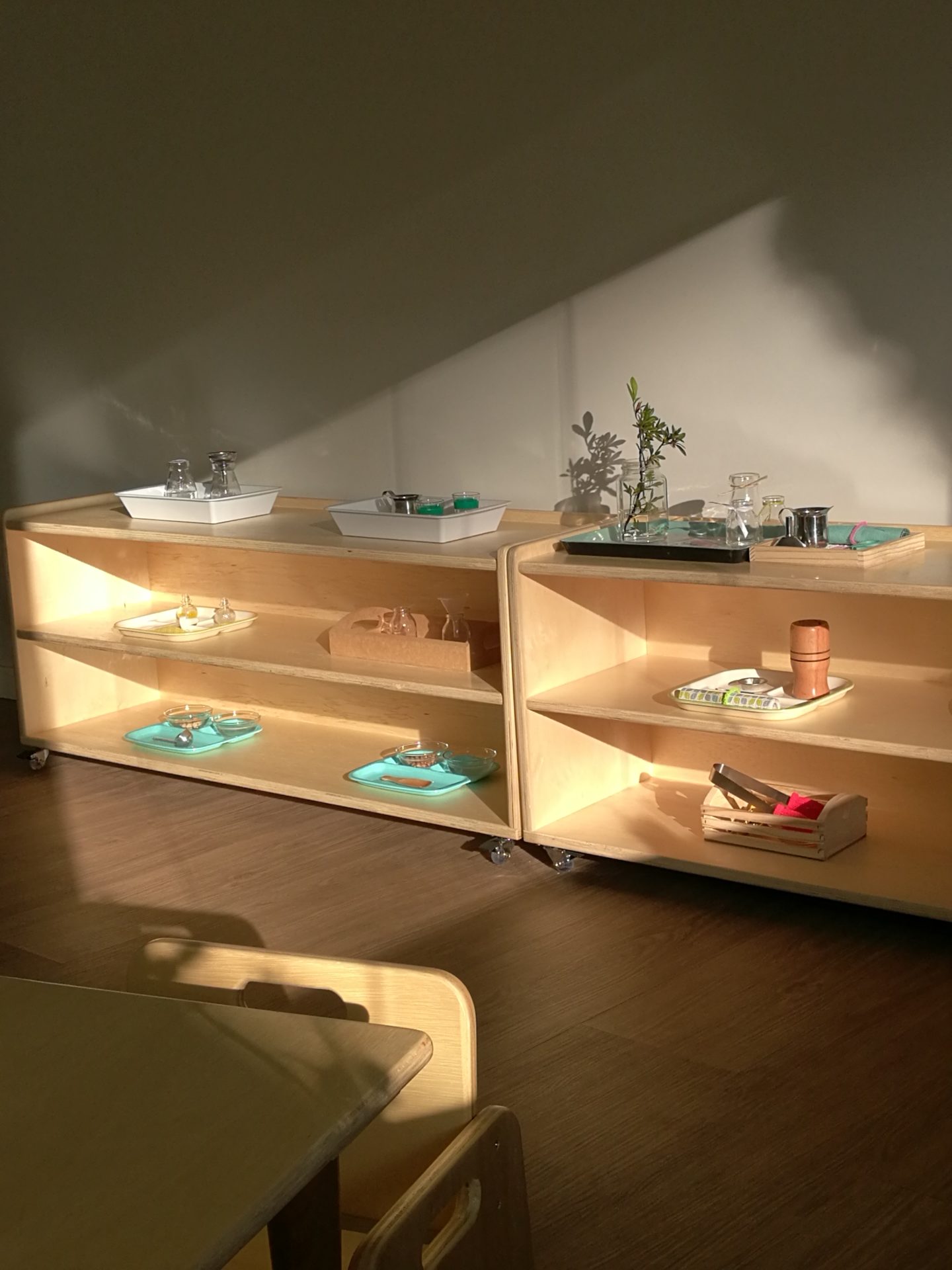
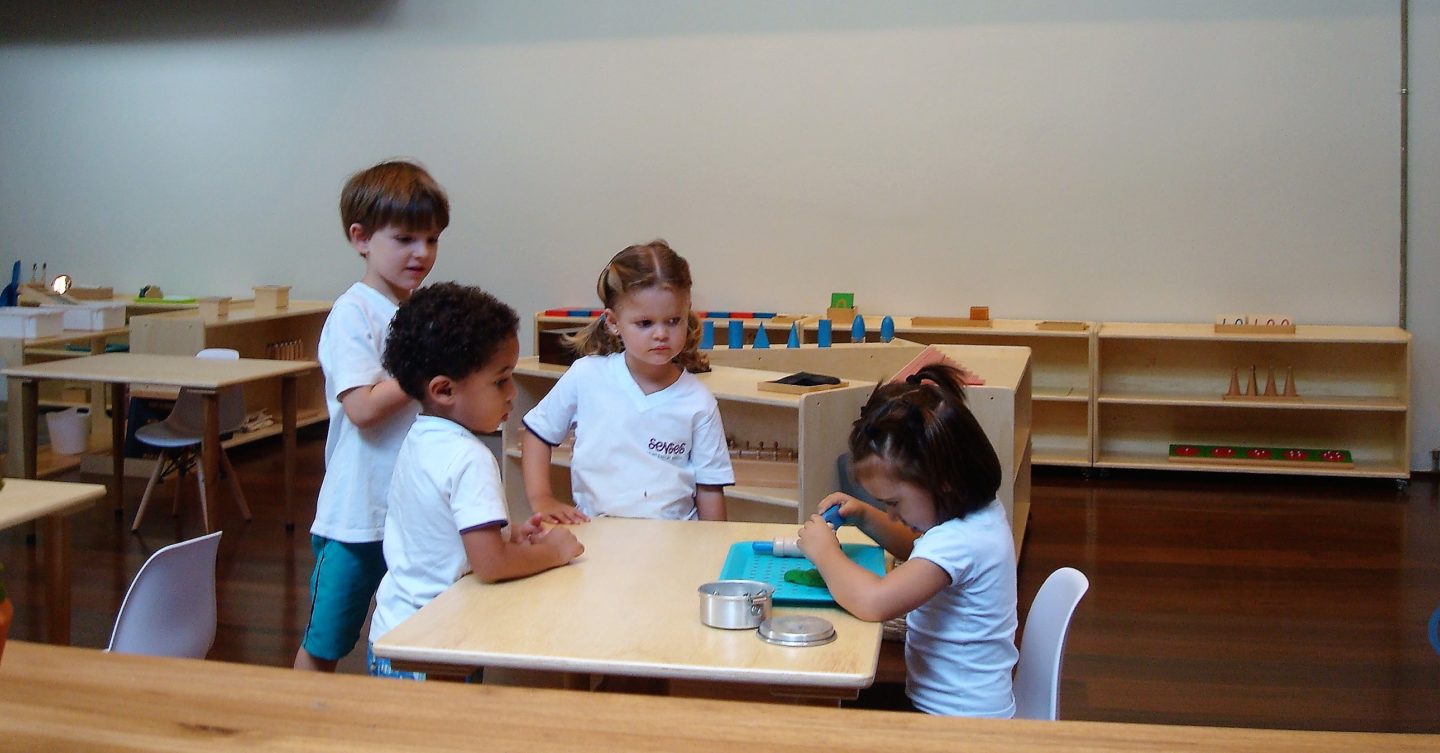
Early childhood is the most important period in human development, due to the rapid changes that occur in the brain during this period. Up to its sixth year, the mind is particularly receptive, so that its neurological system is transformed as each new experience is lived.
The brain is more flexible – or ductile – in the early years of life just to be able to assimilate and accommodate a wide variety of information and interactions. As we grow, the brain matures to become more specialized and fit for more complex functions. As it happens, the brain alters its ability to reorganize and adapt rapidly. At the end of the first year of life, neurological areas that play a role in differentiating sounds already begin to specialize in the language to which the child has been exposed since birth, so we begin to lose the ability to recognize different sounds and phonemes from other languages. Although the “window” of language remains open, the neurological circuits become increasingly solid and stiff.
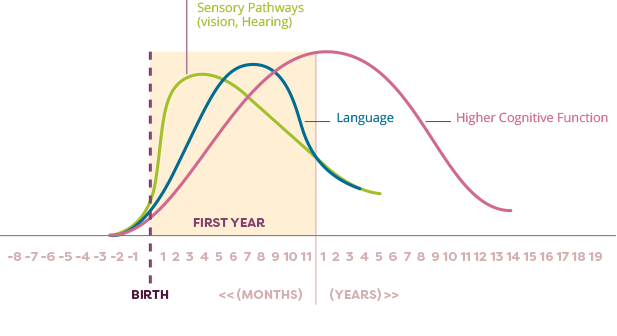
In the proliferation and pruning process, simpler neural connections form first, followed by more complex circuits. The timing is genetic, but early experiences determine whether the circuits are strong or weak.
Source: C.A. Nelson (2000). Credit: Center on the Developing Child
The brain of a child can, therefore, be compared to a sponge that absorbs all the information to which it is exposed, restructuring itself with each new experience. The better the learning conditions in this period, the better the child’s chances of reaching the best of their potential becoming a more balanced, productive, and fulfilled adult.
Language is an ongoing experience in our lives: a sophisticated mechanism that involves different areas of the brain and affects not only our communication with others, but also how we interact with the world and perceive ourselves. Learning a second language enhances the ability to focus, cognition and sense processing, which results in neural networks with greater learning ability.

“Bilingual children, besides not mixing up the two
languages they have learned, tend to focus more on
tasks and to develop better attention than their
monolingual peers “
“The effects of bilingualism on toddlers’ executive functioning”
COORD. DIANE POULIN DUBOIS

At Senses, bilingualism is taken seriously since the nursery, where babies are already exposed to music and words in English, absorbing sounds and phonemes of the language. Once in the Junior Scientist room and in the Senior Scientist room, children enter the language immersion program (after an adaptation period). Our educators are fluent in English and encourage children to use this language in school so they learn effortlessly and naturally.
Contact with nature is fundamental to a full development. Therefore, in our 600m2 (nearly 6,500 sq.ft) of greenery we encourage and value the interaction with the environment. Our students can learn about various plant species and the animals that depend on them for survival, such as birds and insects. We have in our gardens native species of great beauty – such as the heliconia, or banana of the bush, the manacá de cheiro, the golden rain orchid and the jabuticabeira –that stimulate the child in a sensorial fashion, besides offering the opportunity to taste a fruit picked directly from the tree.

“Let the children be free; encourage them; let them run outside when it is raining; let them remove their shoes when they find a puddle of water; and, when the grass of the meadows is damp with dew, let them run on it and trample it with their bare feet; let them rest peacefully when a tree invites them to sleep beneath its shade; let them shout and laugh when the sun wakes them in the morning as it wakes every living creature that divides its day between waking and sleeping. “
MARIA MONTESSORI

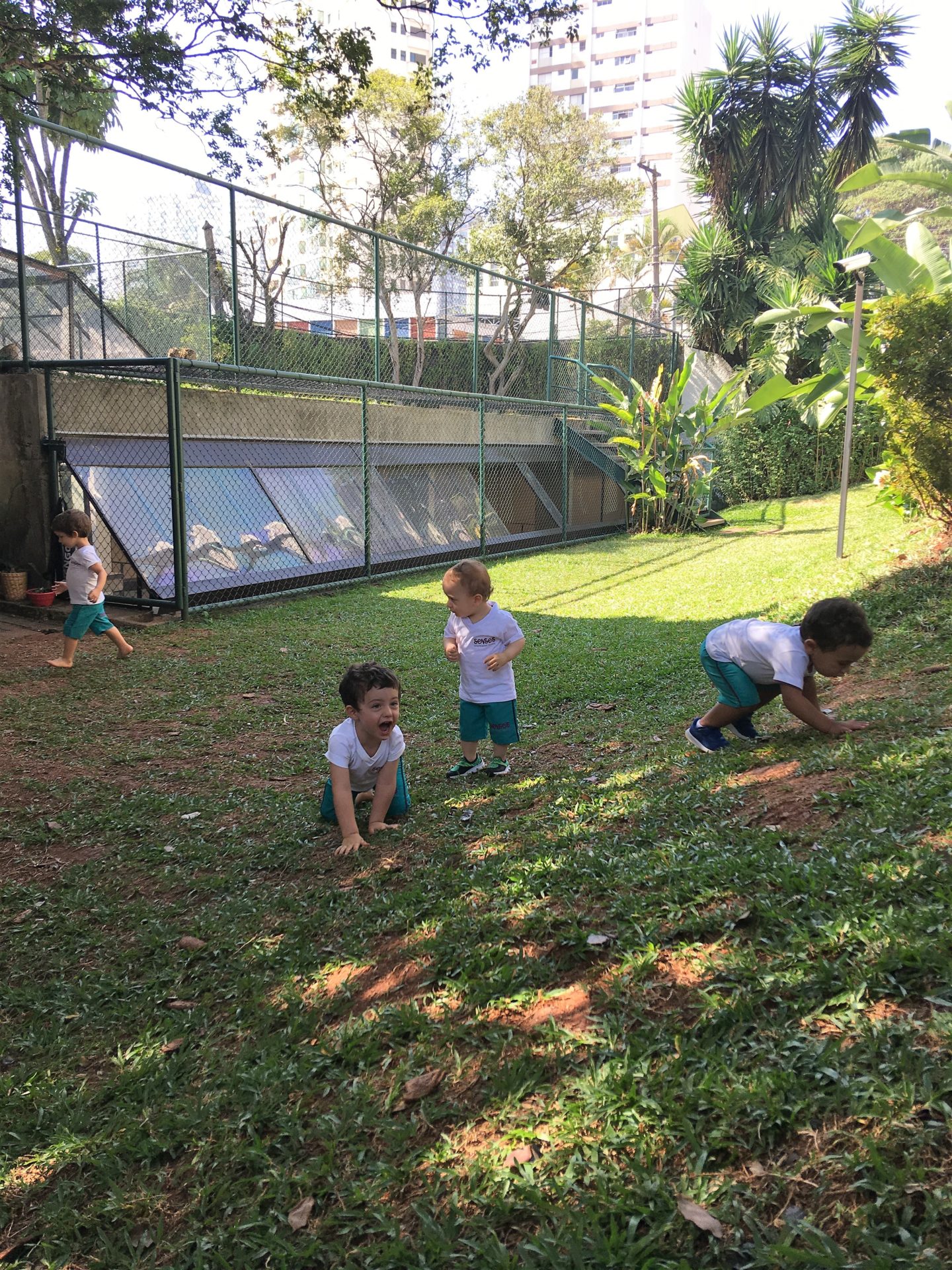

In the forms of conventional teaching, the teacher has a predominantly active and centralizing role, while the children play an often passive role. Within the Montessori method, the role of the educator is a guide, a child proactively builds their learning. It is through this active participation that a child develops their autonomy and self-confidence. While learning, a child also teaches and helps the school community. The method develops not only pedagogical topics but also teaches the child’s role in society in an individualized way.
The answer is yes. The method has been successfully applied for decades to children from a few months to 18 years of age, with different social background and needs, impacting on the physical and intellectual development due to the educator’s individual “look”, always respecting the pace of each child.
Children are free to move around, talk and interact with each other and adults, choose which material to work on and ask for help when needed. The educator uses the observations done as a guide to learning through the prepared environment,
according to child development benchmarks compared to individual development.
The child is not allowed to exhibit 3 behaviors: harming oneself, hurting another living being and damaging the environment.
The great goal of the Montessori method is to promote self-discipline, self-knowledge, and autonomy. The child is naturally stimulated towards reasoning for problem solving, in both academic or emotional challenges. The students of a Montessori school have the capacity to adjust to new situations, even in conventional methods.
No, we are a secular school. In the Montessori method we perceive and respect the child as a whole, his or her beliefs and family values.
The children are welcomed by the educators and invited to change their shoes to enter the classroom.
Considering a period of four hours, children from 18 to 36 months work in mixed-aged rooms for 1.5 hour, and those from three to six years of age work for three hours, uninterrupted. During this period they are free to choose their activities and are also invited by the educator to develop activities within their sensitive periods. Cooking, arts, movement, language, sensorial, practical life, gardening and personal care activities are part of this routine.
The educator then initiates a collective activity, not mandatory, known in the Montessori method as “line activity”, that favors movement, storytelling, singing, birthday celebrations and chatting.
At the end of the line children are engaged in the process of “grace and courtesy”, in which they prepare the environment for the snack, exercising sense of community and socialization.
The experience in our garden is part of the routine for approximately 1-1.5 hour mornings and afternoons. While outdoors, children explore and play, the are free to fantasize and create. We also offer activities related to motor development and sports.
The Montessori teacher is called a Directress because she facilitates the classroom activity. She carefully plans the environment in the interests of the children and she helps children progress from one activity to the next. She is trained to deal with each child individually, allowing them to choose from many activities within their range of ability.